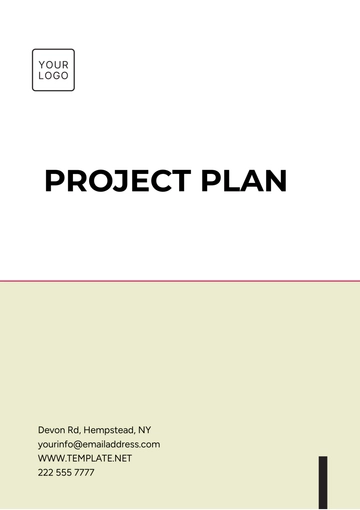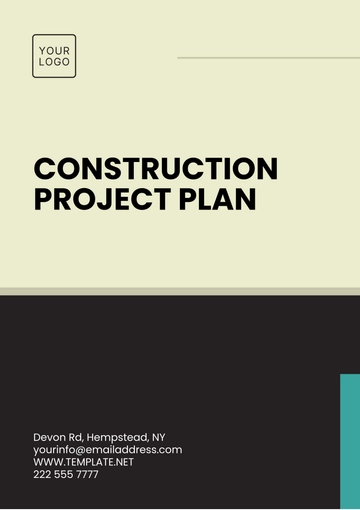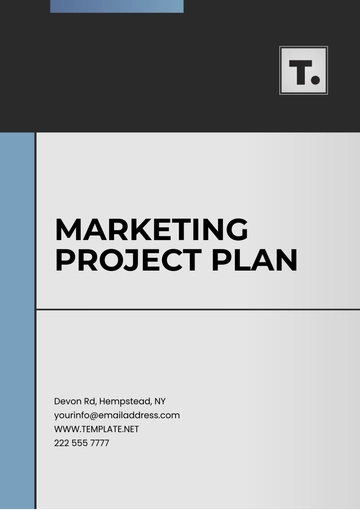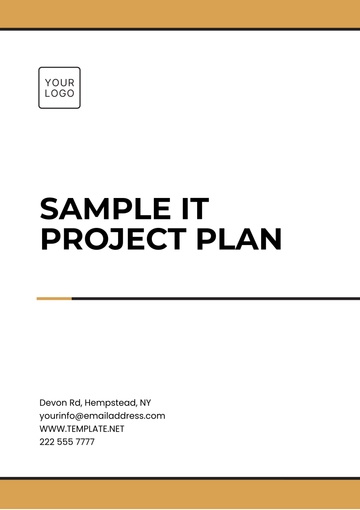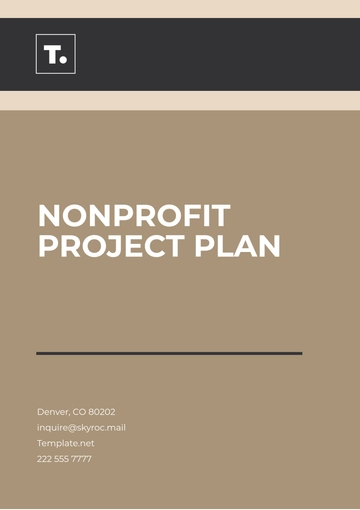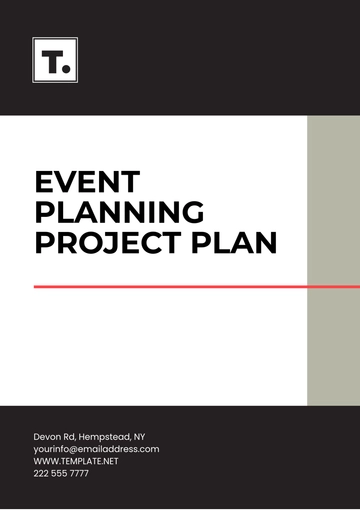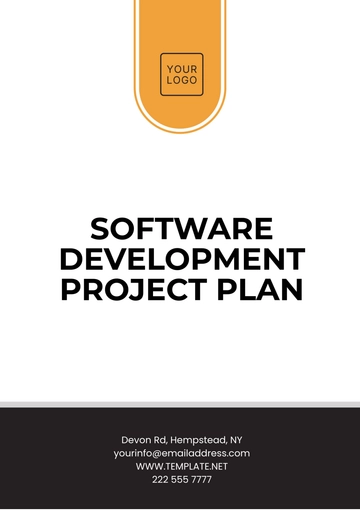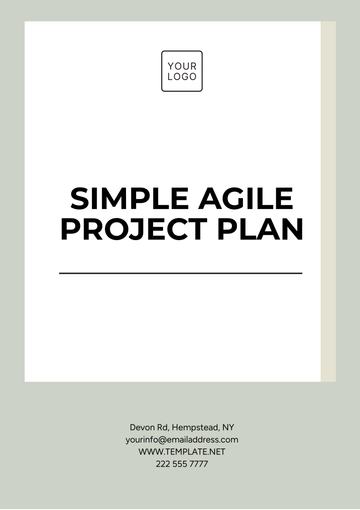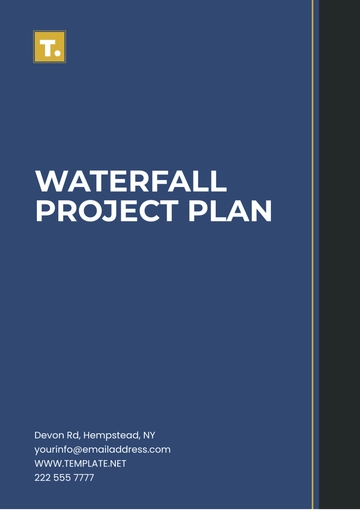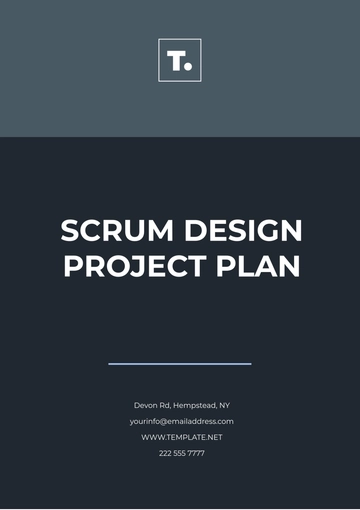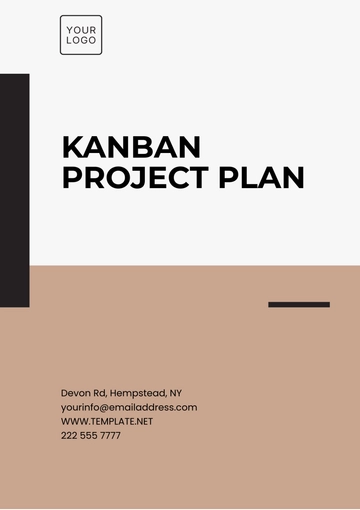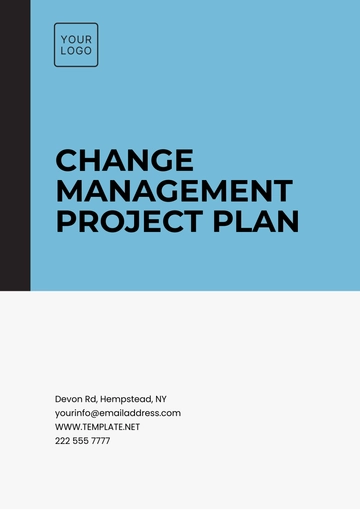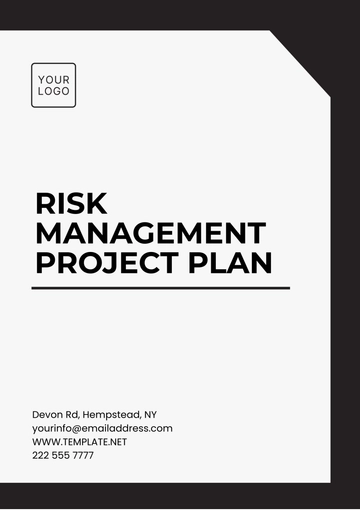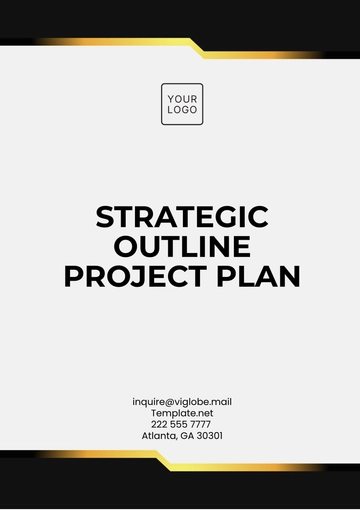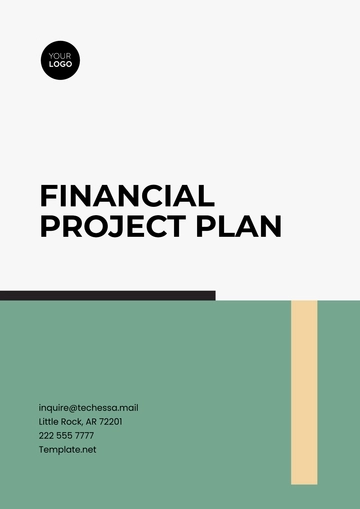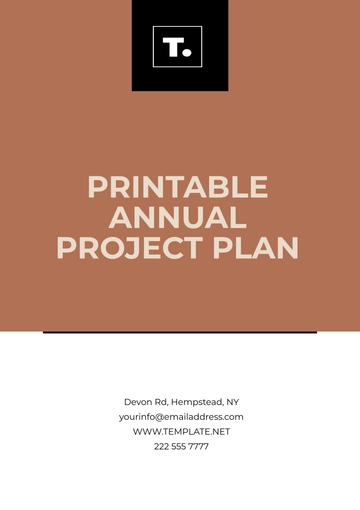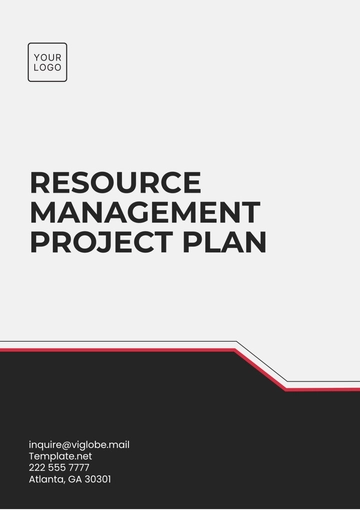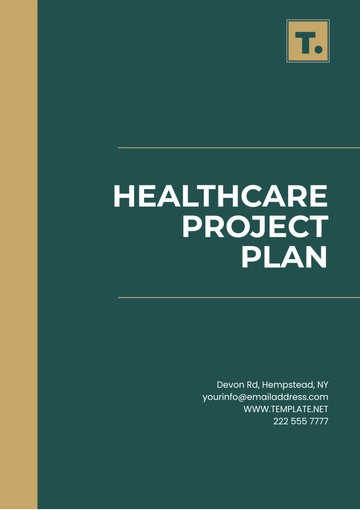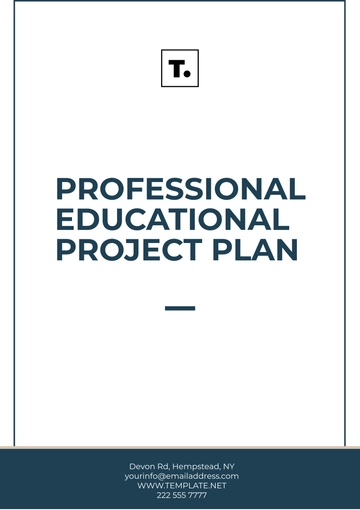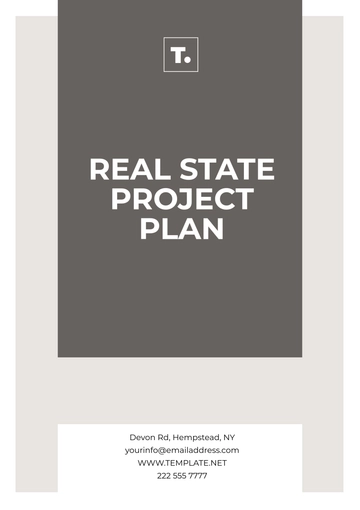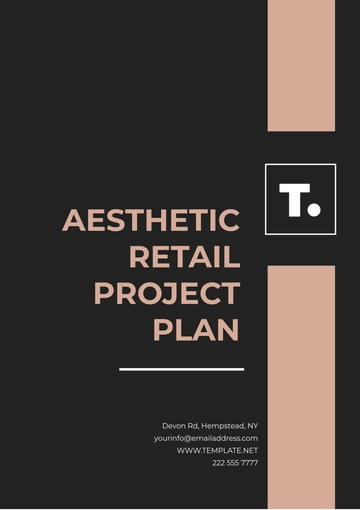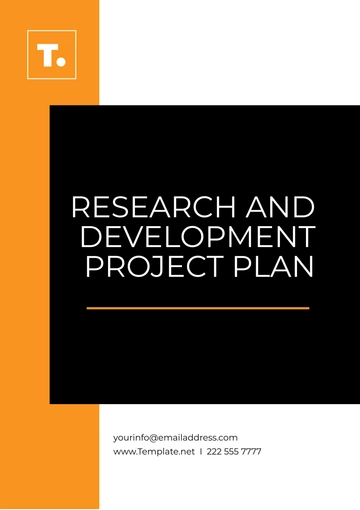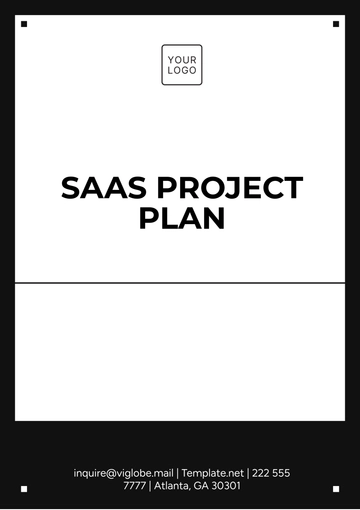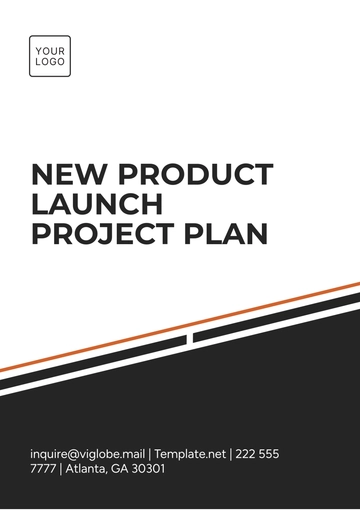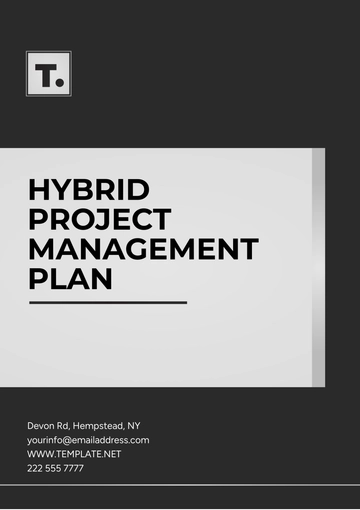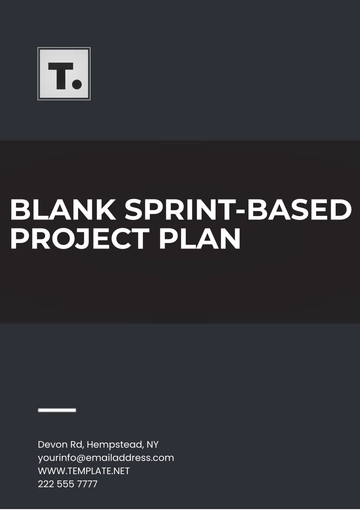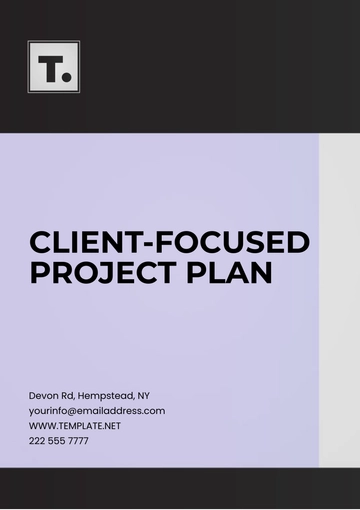Free Travel Agency Project Plan
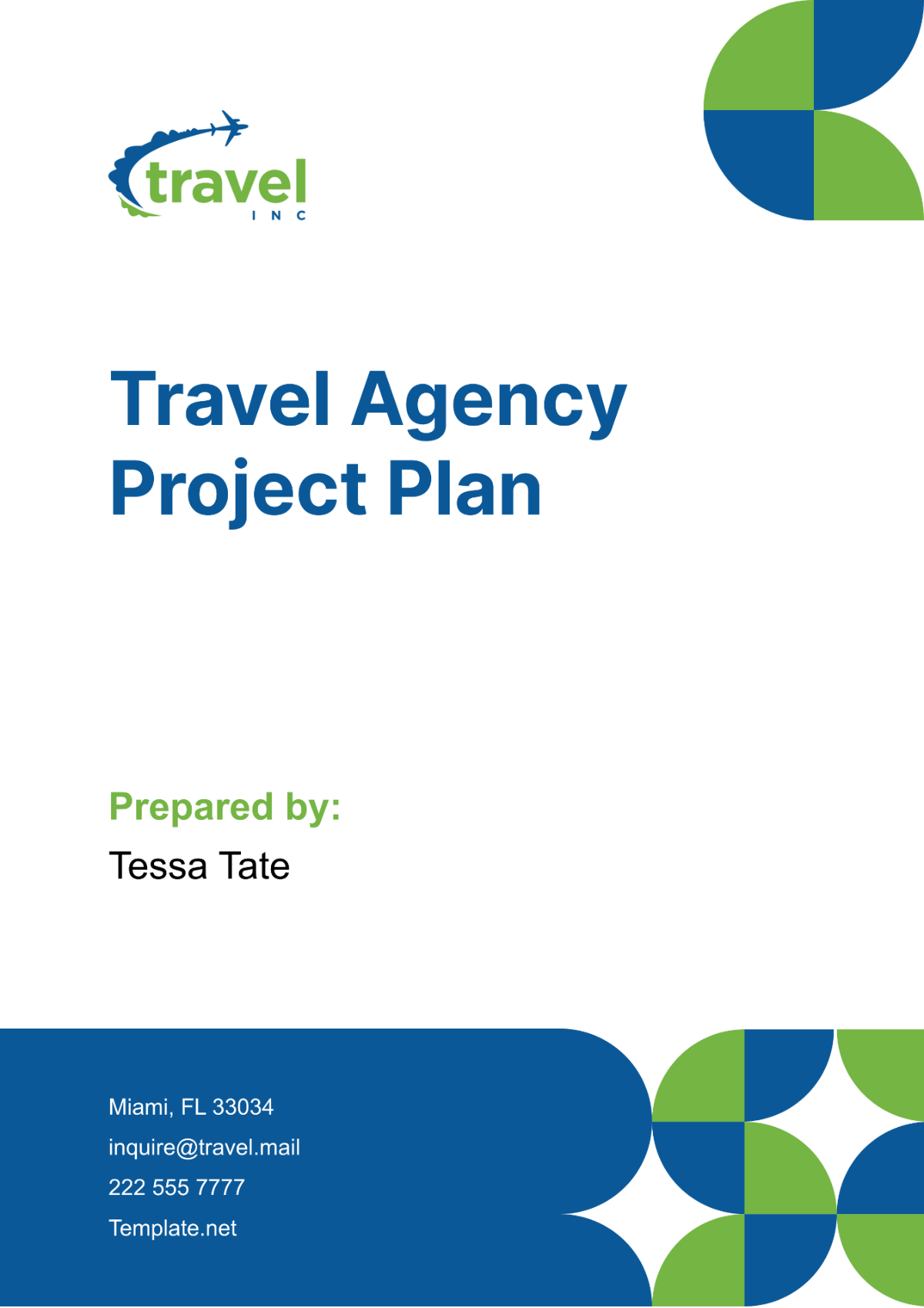
I. Executive Summary
This Project Plan of [Your Company Name] is a comprehensive strategy that outlines our approach to enhancing client satisfaction, streamlining operations, and boosting profitability. This plan is dynamic, evolving with the needs of our clients and the travel industry. It serves as a roadmap for our team, guiding us towards our objectives and ensuring that we stay on track.
Our project revolves around the development of new and exciting travel packages, the implementation of innovative marketing strategies, and the adoption of cutting-edge technologies. These initiatives aim to improve both the customer experience and our operational efficiency. By focusing on these areas, we aim to position [Your Company Name] as a leader in the travel industry.
The total budget for this project is $150,000. This comprehensive budget covers all key areas of the project, ensuring that we have the resources needed to achieve our objectives. We anticipate that the return on investment will be significant, given the potential for increased market share and customer loyalty.
II. Introduction
A. Objective
Client Attraction: Our first goal is to attract more clients. We aim to do this by offering unique and personalized travel experiences that cater to a wide range of interests and budgets.
Customer Retention: Our second goal is to retain our existing customers. We believe that by consistently delivering high-quality services and demonstrating our commitment to customer satisfaction, we can build strong, long-term relationships with our clients.
Market Share Growth: Our third goal is to grow our overall market share. By continuously improving our services and staying ahead of industry trends, we aim to become a leading player in the travel industry.
B. Scope Definition
Travel Package Design: We will design a variety of travel packages that cater to different customer preferences. These packages will include a range of destinations, accommodations, and activities to ensure a memorable travel experience for our clients.
Vendor Partnerships: We will establish partnerships with reliable vendors to provide the best possible services to our clients. These partnerships will include accommodation providers, transportation companies, and local tour operators.
Marketing Campaigns: We will launch marketing campaigns to promote our services and attract new clients. These campaigns will utilize various channels, including social media, email marketing, and search engine optimization.
Customer Relationship Management: We will implement a customer relationship management (CRM) system to manage our interactions with current and potential customers. This system will help us provide better customer service, increase customer satisfaction, and drive sales growth.
III. Project Timeline
The project timeline is a critical component of our plan. It provides a clear roadmap for our team, outlining the key milestones we aim to achieve and the estimated duration for each. The following table presents a detailed breakdown of these milestones and their respective timelines:
Key Milestone | Duration |
|---|---|
Market Research Completion | 3 months |
New Package Launch | 2 months |
Marketing Campaign Initiation | 2 months |
CRM Software Deployment | 5 months |
A. Market Research Completion
The first milestone in our project timeline is the completion of market research. This phase, which is expected to last three months, involves gathering and analyzing data about our target market, competitors, and industry trends. The insights gained from this research will inform the development of our travel packages and marketing strategies.
B. New Package Launch
The second milestone is the launch of our new travel packages. Scheduled for two months after the completion of our market research, this phase involves the design and rollout of our new offerings. These packages will be tailored to meet the diverse needs and preferences of our clients, based on the insights gathered during the market research phase.
C. Marketing Campaign Initiation
The third milestone is the initiation of our marketing campaign. This phase, which is set to begin two months after the launch of our new packages, involves promoting our services to attract new clients. We will utilize various channels, including social media, email marketing, and search engine optimization, to maximize the reach and effectiveness of our campaign.
D. CRM Software Deployment
The final milestone is the deployment of our new customer relationship management (CRM) software. This phase, which is expected to last five months, involves the implementation of a system to manage our interactions with current and potential customers. This system will help us provide better customer service, increase customer satisfaction, and drive sales growth.
The project timeline is a strategic tool that helps us manage our resources, monitor our progress, and stay on track to achieve our objectives. Each milestone represents a significant step towards our goal of optimizing and expanding the services offered by [Your Company Name].
Understanding the importance of each milestone and its role in the overall project is crucial for effective project management. For instance, the market research phase is not just about gathering data; it’s about gaining insights that will inform our strategies and decisions throughout the project. Similarly, the CRM software deployment is not just about implementing a new system; it’s about enhancing our customer service and improving our operational efficiency.
IV. Budget Allocation
The budget allocation is a crucial part of our plan. It outlines how we intend to distribute our resources across various aspects of the project. The following chart and table showcase the budget allocation for each key area of the project:
Key Area | Allocation |
|---|---|
Market Research | $20,000 |
Package Development | $50,000 |
Marketing and Advertising | $30,000 |
Technology Enhancement | $40,000 |
Staff Training | $10,000 |
Total | $150,000 |
A. Market Research
The allocation for market research is $20,000. This investment will enable us to gather valuable data about our target market, competitors, and industry trends. The insights gained from this research will inform the development of our travel packages and marketing strategies, ensuring that our offerings are tailored to meet the needs and preferences of our clients.
B. Package Development
The largest portion of our budget, $50,000, is allocated to package development. This reflects the importance we place on offering unique and personalized travel experiences. These funds will be used to design a variety of travel packages that cater to different customer preferences, including a range of destinations, accommodations, and activities.
C. Marketing and Advertising
We have allocated $30,000 to marketing and advertising. This budget will be used to promote our services and attract new clients. We will utilize various channels, including social media, email marketing, and search engine optimization, to maximize the reach and effectiveness of our marketing efforts.
D. Technology Enhancement
A significant portion of our budget, $40,000, is dedicated to technology enhancement. This investment will enable us to adopt cutting-edge technologies that improve both the customer experience and our operational efficiency. Specifically, these funds will be used to implement a new customer relationship management (CRM) system.
E. Staff Training
The remaining $10,000 of our budget is allocated to staff training. This investment in our team will ensure that they have the skills and knowledge needed to deliver high-quality services to our clients. It will also enable them to effectively use our new CRM system.
F. Total
The total budget for this project is $150,000. This comprehensive budget covers all key areas of the project, ensuring that we have the resources needed to achieve our objectives.
The budget allocation is a strategic tool that helps us manage our resources effectively and make informed decisions. Each allocation reflects the importance we place on that particular aspect of the project and the role it plays in achieving our overall objectives. For instance, the significant allocation for package development underscores our commitment to offering unique and personalized travel experiences. Similarly, the substantial investment in technology enhancement highlights our focus on improving the customer experience and operational efficiency.
Overall, the budget allocation serves as a roadmap for our financial planning, guiding us in distributing our resources effectively and investing in areas that are crucial to our success. By clearly defining our budget allocation, we can manage our finances effectively, monitor our spending accurately, and make informed financial decisions that drive our project towards success.
V. Marketing Strategy
A. Digital Marketing
Search Engine Optimization (SEO): SEO involves optimizing our website and content to rank higher in search engine results, thereby increasing visibility and attracting more potential clients. We will focus on keyword research, on-page optimization, and link building to improve our SEO.
Social Media Marketing: Social media platforms offer a powerful way to engage with our audience and promote our services. We will create engaging content, interact with our followers, and use targeted ads to reach potential clients.
Email Marketing: Email marketing allows us to directly communicate with our clients and keep them updated about our latest offerings. We will focus on creating engaging newsletters, promotional emails, and personalized messages to enhance client engagement and loyalty.
Content Marketing: Content marketing involves creating and sharing valuable content to attract and engage our target audience. We will focus on creating informative blog posts, engaging videos, and helpful travel guides to establish [Your Company Name] as a trusted source of travel information.
Pay-Per-Click (PPC) Advertising: PPC advertising is a cost-effective way to reach potential clients who are actively searching for travel services. We will create targeted ads to appear in search engine results and on relevant websites, driving more traffic to our website.
B. Partnerships
Travel Influencers: Collaborating with travel influencers can help us reach a larger audience. We will partner with influencers who align with our brand values to promote our services.
Local Businesses: Partnering with local businesses can enhance our travel packages and provide unique experiences for our clients. We will seek partnerships with local tour operators, restaurants, and cultural institutions.
Travel Platforms: Listing our services on popular travel platforms can increase our visibility and attract more clients. We will ensure our presence on major travel booking websites and apps.
Corporate Partnerships: Establishing corporate partnerships can open up new business opportunities. We will offer corporate travel solutions and seek partnerships with businesses for their travel needs.
C. Promotions
Discount Offers: Offering discounts on our travel packages can incentivize potential clients to make a booking. We will run promotional campaigns during peak travel seasons to maximize bookings.
Loyalty Program: A loyalty program can encourage repeat bookings from our clients. We will offer rewards such as discounts, upgrades, and exclusive experiences to our loyal clients.
Referral Program: A referral program can help us reach new clients through word-of-mouth marketing. We will incentivize our clients to refer their friends and family to our services.
Contests and Giveaways: Running contests and giveaways on our social media platforms can increase engagement and attract new followers. We will offer exciting prizes such as free trips, discounts, or travel accessories to the winners.
D. Advertising
Online Advertising: Online advertising allows us to reach a large audience at a relatively low cost. We will use platforms like Google Ads and social media ads to target potential clients based on their interests, demographics, and browsing behavior.
Print Advertising: Print advertising in travel magazines, newspapers, and brochures can help us reach a specific demographic of travel enthusiasts. We will create eye-catching ads that highlight our unique selling points and travel packages.
Outdoor Advertising: Outdoor advertising through billboards, transit ads, and digital signage can increase our brand visibility in high-traffic areas. We will strategically place our ads in locations where they are likely to be seen by our target audience.
Radio and TV Advertising: Radio and TV advertising can help us reach a broad audience. We will create engaging commercials that highlight the benefits of our services and inspire listeners and viewers to travel.
Sponsorship: Sponsoring travel events, shows, or community activities can increase our brand visibility and reputation. We will seek sponsorship opportunities that align with our brand values and target audience.
Direct Mail: Direct mail advertising allows us to reach potential clients directly. We will send brochures, catalogs, and promotional offers to potential clients to encourage them to book our services.
VI. Risk Management
A. Market Fluctuation
Seasonal Variations: The travel industry is highly seasonal, with demand fluctuating throughout the year. We will develop diverse travel packages that cater to different seasons to ensure steady business all year round.
Economic Conditions: Economic conditions can significantly impact people’s travel plans. We will offer a range of packages at different price points to cater to clients with varying budgets.
Industry Trends: Trends in the travel industry can affect the popularity of certain destinations or types of travel. We will stay abreast of industry trends to ensure our offerings remain relevant and attractive.
Competitor Actions: Actions by competitors, such as the launch of new packages or promotional offers, can affect our market share. We will closely monitor our competitors and adjust our strategies as needed.
Currency Exchange Rates: Changes in currency exchange rates can affect the cost of international travel packages. We will consider these fluctuations when pricing our packages and adjust as necessary.
B. Geopolitical Scenarios
Political Instability: Political instability in a destination can deter travelers. We will monitor the political situation in our destinations and adjust our offerings as needed.
Travel Advisories: Travel advisories issued by governments can affect demand for certain destinations. We will stay informed about these advisories and communicate any relevant information to our clients.
Visa Policies: Changes in visa policies can affect the ease of travel to certain destinations. We will keep up-to-date with these changes and advise our clients accordingly.
International Relations: Relations between countries can impact travel. We will monitor international relations and consider this when choosing our travel destinations.
C. Natural Disasters
Weather Conditions: Severe weather conditions can disrupt travel plans. We will monitor weather forecasts and advise our clients on the best times to travel to avoid severe weather.
Natural Disasters: Natural disasters such as earthquakes, hurricanes, or floods can make certain destinations unsafe. We will stay informed about potential natural disasters and adjust our travel packages as necessary.
Pandemics: Health crises like pandemics can halt travel completely. We will stay informed about global health situations and advise our clients accordingly.
Environmental Changes: Environmental changes, such as rising sea levels or deforestation, can affect the attractiveness of certain destinations. We will consider these factors when selecting destinations for our travel packages.
Wildlife Encounters: Encounters with wildlife can pose risks to travelers. We will provide our clients with information on how to interact safely with wildlife during their travels.
D. Technological Risks
Data Security: As we handle sensitive client information, data security is a major concern. We will implement robust security measures to protect our clients’ data.
System Downtime: Downtime of our booking system or website can affect our operations and customer satisfaction. We will ensure our systems are reliable and have contingency plans in place for any downtime.
Technology Adoption: The successful adoption of new technologies, such as a new CRM system, is crucial for improving our operations. We will provide adequate training to our staff to ensure smooth adoption.
Online Reputation: Negative reviews or comments online can affect our reputation. We will actively manage our online reputation by responding to reviews and addressing any issues raised.
Digital Marketing Performance: Our digital marketing efforts need to effectively attract and convert clients. We will regularly review and optimize our digital marketing performance.
Regulatory Compliance: We need to comply with regulations related to online business, such as data protection laws. We will stay informed about these regulations and ensure our practices are compliant.
VII. Monitoring and Evaluation
A. Continuous Monitoring
Real-Time Dashboards: Real-time dashboards provide a visual representation of our key performance indicators (KPIs), allowing us to track our progress at a glance. These dashboards will be updated in real-time, ensuring that we have the most up-to-date information at our fingertips.
Performance Tracking: Performance tracking involves regularly reviewing our KPIs to assess our performance. This will allow us to identify any areas where we are not meeting our targets and take corrective action as needed.
Issue Identification: By continuously monitoring our progress, we can quickly identify any issues or challenges that arise. This will allow us to address these issues promptly and prevent them from derailing our project.
Progress Reporting: Regular progress reports will be prepared to keep all stakeholders informed about our progress. These reports will provide a detailed overview of our achievements, challenges, and plans for the future.
Feedback Collection: We will continuously collect feedback from our clients and team members. This feedback will provide valuable insights into how our services are being received and where improvements can be made.
B. Periodic Evaluations
Evaluation Planning: We will develop a detailed evaluation plan outlining the evaluation objectives, methods, and timeline. This plan will guide our evaluation efforts and ensure that they are aligned with our project objectives.
Data Collection: As part of our evaluations, we will collect data on various aspects of our project. This may include client satisfaction ratings, sales figures, and website traffic data.
Data Analysis: The data collected will be analyzed to draw meaningful insights. This analysis will help us understand our performance and identify areas for improvement.
Evaluation Reporting: The findings of our evaluations will be compiled into comprehensive evaluation reports. These reports will present our findings in a clear and concise manner, making it easy for stakeholders to understand our performance.
Action Planning: Based on the findings of our evaluations, we will develop action plans to address any areas of concern. These plans will outline the steps we will take to improve our performance and achieve our project objectives.
C. Key Performance Indicators
Customer Satisfaction: Customer satisfaction is a key indicator of our performance. We will regularly survey our clients to assess their satisfaction with our services.
Sales Growth: Sales growth is another important KPI. We will track our sales figures to assess the effectiveness of our marketing strategies and the attractiveness of our travel packages.
Operational Efficiency: Operational efficiency is a measure of how well we utilize our resources. We will track metrics such as the time taken to process bookings and the utilization rate of our travel packages to assess our operational efficiency.
Market Share: Our market share is an indicator of our competitiveness. We will monitor our market share to assess our performance relative to our competitors.
Employee Performance: The performance of our team members is crucial to the success of our project. We will regularly review our team members’ performance to ensure that they are contributing effectively to our project.
Financial Performance: Our financial performance is a key indicator of our project’s success. We will monitor our revenue, costs, and profitability to assess our financial health.
VIII. Conclusion
In conclusion, the Project Plan by [Your Company Name] is a robust and comprehensive strategy designed to propel our agency to new heights. By focusing on client satisfaction, operational efficiency, and profitability, we are confident that we can navigate the challenges of the travel industry and emerge as a leader in our field.
The impact of this project will be far-reaching, affecting every aspect of our operations and potentially reshaping our agency. We look forward to the journey ahead and are excited about what the future holds for [Your Company Name]. As we embark on this journey, we are mindful of the challenges that lie ahead. However, with careful planning, diligent execution, and a commitment to excellence, we are confident that we can achieve our objectives and set [Your Company Name] on a path to sustained growth and success.
- 100% Customizable, free editor
- Access 1 Million+ Templates, photo’s & graphics
- Download or share as a template
- Click and replace photos, graphics, text, backgrounds
- Resize, crop, AI write & more
- Access advanced editor
Execute projects effectively in a few clicks with our editable Travel Agency Project Plan Template on Template.net! This comprehensive and customizable document offers a structured framework for planning, executing, and monitoring projects within your agency. Make use of our AI Editor Tool to customize the plan to each project's objectives!
